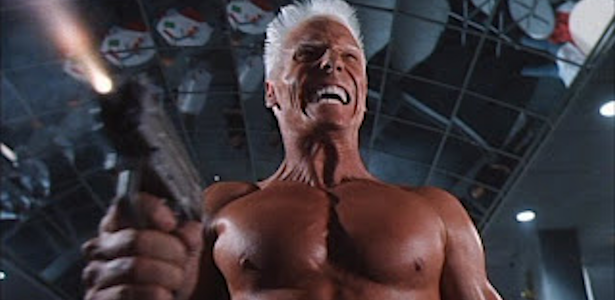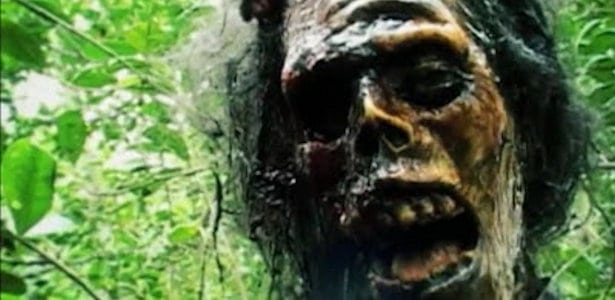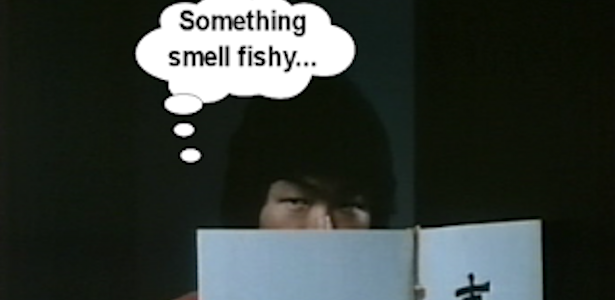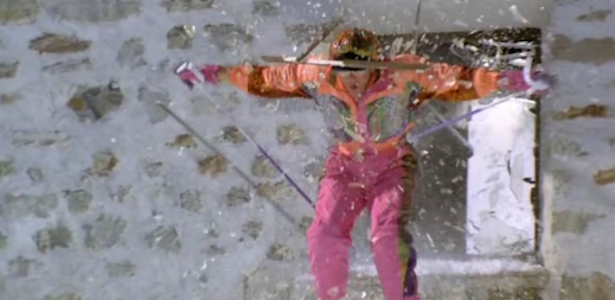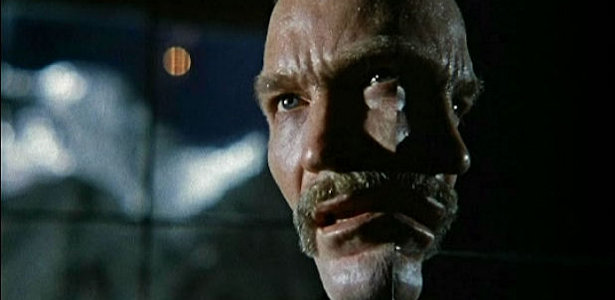 |
| Joyner directing TRANCERS III (1992) |
#96 - BLACK GLOVES (2005)
 |
| Promotional art for BLACK GLOVES |
Sounds like a pretty easy sell, right? Well not in Hollywood where execs want a script’s synopsis in five words or less, preferably with a similar movie mentioned (legend has it a top exec once described a project they were fond of as “like DIE HARD but set in a skyscraper”). Fighting such odds is tough, but Joyner prevailed. “BLACK GLOVES was sold to [producers] Pen Densham and John Watson a few years ago,” Joyner reveals. “They tried to get that going at MGM and didn’t.”
 |
| The end result of dealing with studios |
Indeed, chances are you say “giallo” to a studio exec and they start thinking of Bill Cosby and pudding pops. Mmmmm, pudding pops. Solving the title problem was a snap compared to the office politics: “MGM was in the process of a changing of the guard, and was sold, which is always death to a script in development, and that’s what happened with us. John and Pen are great producers, and they devoted a lot of time to the project, but everyone gets run over when studios reorganize.” Thankfully, the rights have fully reverted back to Joyner and he feels it is something that might be worth dusting off at some point.
#97 - COP WAR (2005-present)
Around the same time period, Joyner developed a script with old friend Sheldon Lettich, a screenwriter-director best known for his RAMBO III (1988) screenplay and various collaborations with Jean-Claude Van Damme. The inspiration for this contemporary action flick came from an unusual source: the 1928 Herbert Asbury non-fiction book dealing with early 20th century gangs in America’s biggest city. “I had gotten a hold of a copy – years before the Martin Scorsese movie – of the [Asbury] book THE GANGS OF NEW YORK,” Joyner discloses. “My father had a first edition of it sitting in our house forever and I read it. I was so interested in the fact that these police departments at the turn of the century in New York City basically had this shooting war going on. Most of it was ethnic – the Irish versus the Italians. Reading a lot about what was going on in L.A. – whether it was the Rodney King or even going back to the Manson investigation – there was never a lot of cooperation between the LAPD and the Sheriff’s department. I thought, ‘What if things got so bad that an actual shooting war broke out between those two facets?’”
Together the two screenwriters came up with a story of warring cop factions that, when not arresting folks, wage war over the city streets in Pittsburgh. “Sheldon had the idea that, since I’m from Pittsburgh, to set it in an urban setting and we went for Pittsburgh,” Joyner says of the plot. “A rookie policeman discovers his senior partner is involved with corruption that involves his entire precinct. When he tries to report it, he finds himself at war with his fellow officers.”
With Lettich’s Van Damme connection, it was only a matter of time before the “Muscles from Brussels” took interest in the project. “Jean-Claude Van Damme was interested in it for a while because, of course, he and Sheldon have a very good history,” he reveals. “Sheldon was always going to direct it. It’s come awfully close a few times.” One of those times was a close call as the script almost undeservedly ending up as the basis for the direct-to-video S.W.A.T. II for Sony (the world was eventually blessed with the unrelated S.W.A.T. sequel S.W.A.T.: FIREFIGHT in 2011). In 2005 a prominent director of THE WIRE also got involved, but the film was still not made.
What COP WAR almost became:
As it stands now, the script is still open for development and hopefully Lettich can get it on the front burner again. Crazy cop stories like the recent Christopher Dorner case in Los Angeles show the subject matter will always be relevant. “It’s always been an active project,” Joyner explains of the script, “and every once and a while Sheldon will call me and say, ‘Oh guess what? Somebody wants to do something with COP WAR again!’”
#98 - BOXCAR BOYS
 |
| Early 20th Century railroad camp |
Like the aforementioned COP WAR, BOXCAR BOYS also found its origin through a bit of historical research after Joyner had moved away from Hollywood for a period and was living in North Carolina. “Here is the thing I discovered – in certain states, particularly in the South, the railroad companies themselves actually owned the land and the property around where the land where tracks existed,” he details. “That is why they could have the rail hops as a private police force and nobody could do anything because, essentially, they were enforcing law on private property. You would see the pictures of the tent cities around the railroad yard during the Depression.”
 |
| Early 20th Century unsanctioned boxing match |
With his script completed, Joyner got the labor of love to his agent and the “Jack Dempsey meets Jack London” style scenario drew immediate interest from several parties. “It got me a lot of notice,” Joyner says. “A producer got a hold of it and at different times we had Christopher Walken attached, we had Burt Reynolds attached, we had Harvey Keitel attached. All kinds of people.” One of the more fascinating interested talents was a man legendary for using his fists in real life and having been a participant in one of moviedom’s greatest fist fights in THEY LIVE (1988). “Roddy Piper really, really wanted to do it,” he reveals. “He would be playing the bad guy, which I thought would have been great. He gave me some great feedback.”
 |
| Fargo directs Chuck Norris on FORCED VENGEANCE (1982) |
As it stands, Joyner’s BOXCAR BOYS is still something he cherishes to this day and hopes to see made into a feature film. “You almost have a whole different feeling about that kind of work and your commitment to that work than I do with the [writing] assignments” he acknowledges regarding personal projects versus writing assigned works. “That doesn’t mean I blew anything off, but your emotional investment is a little different. There’s a little bit of difference between that and sitting in the bathtub and going, ‘Oh my God, I’ve got a great idea for a movie’ and nursing it along yourself.”
THE END?
 |
| Preproduction art for THE RETURN OF CAPTAIN NEMO |




